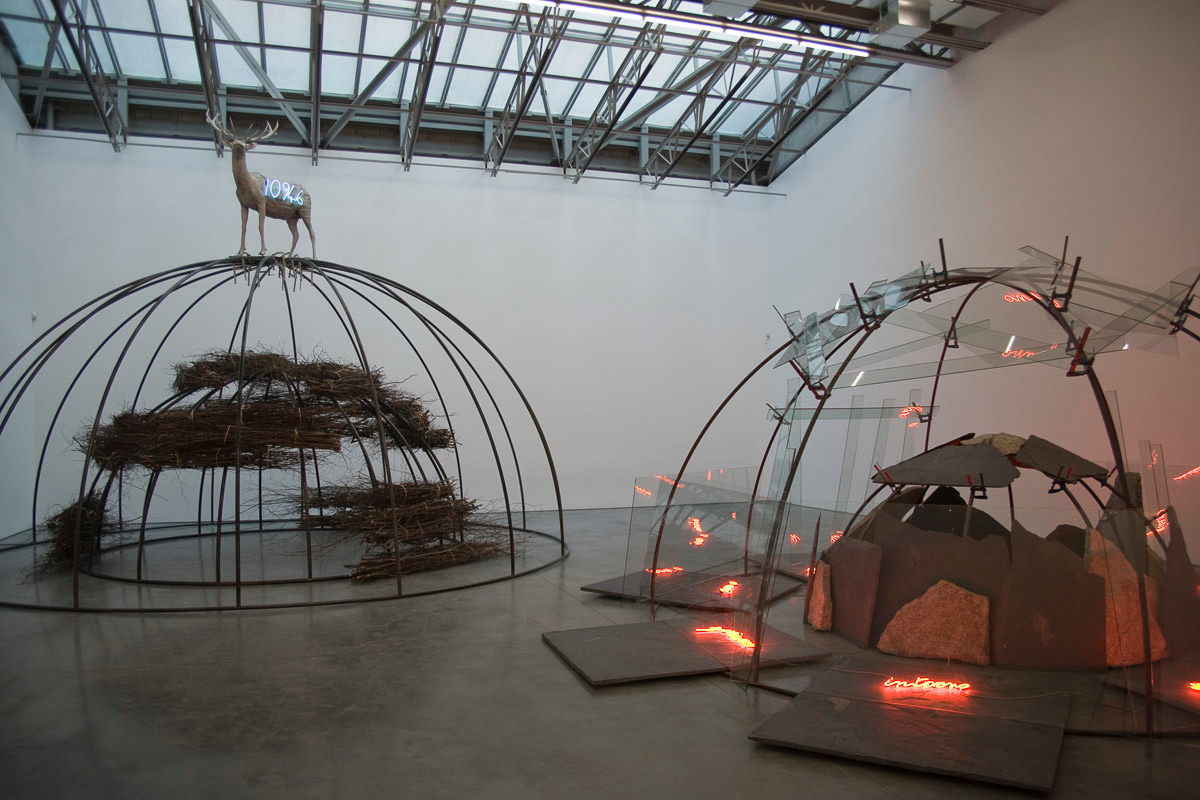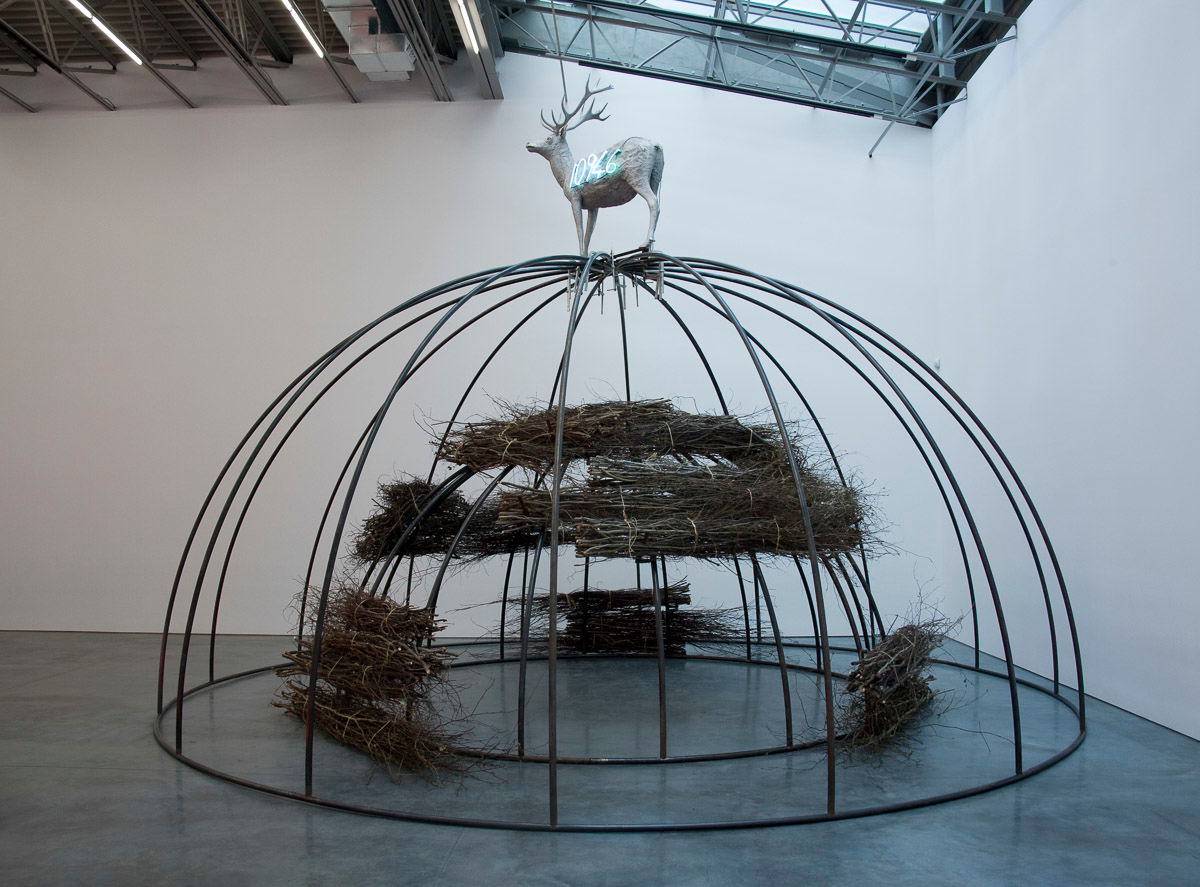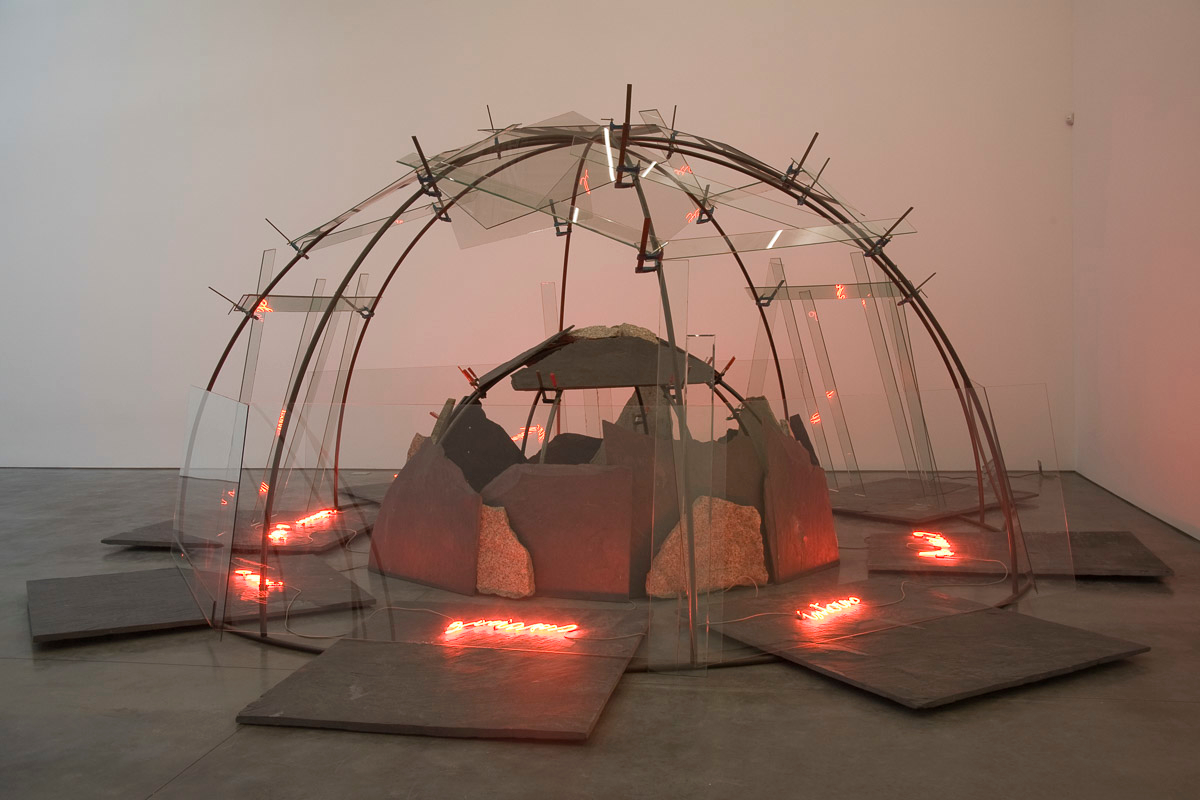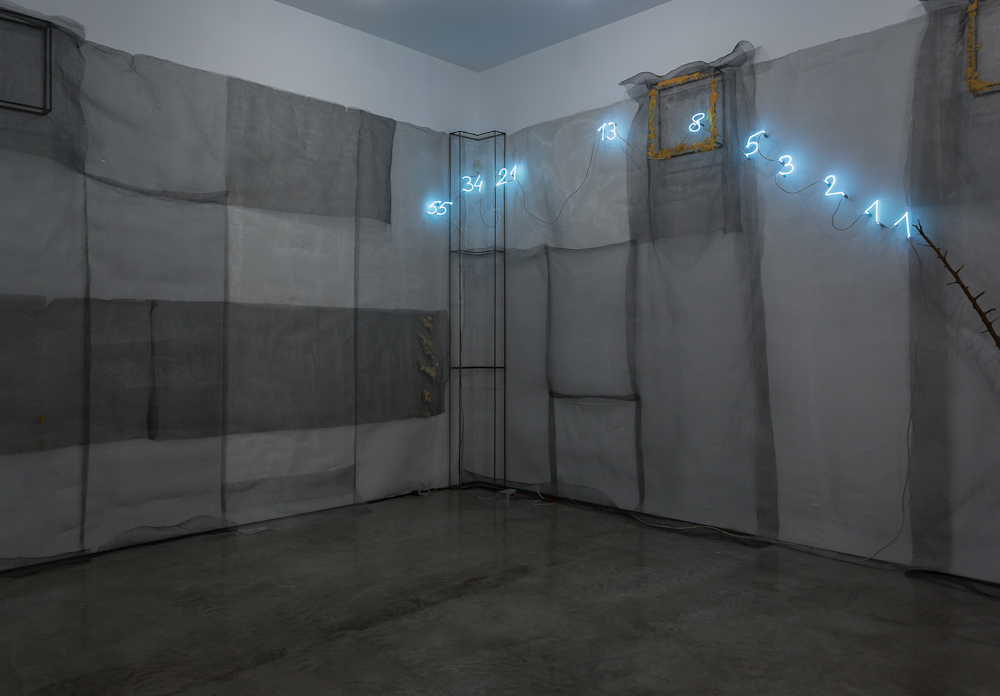September 18, 2008 — January 6, 2009
New York: 21st Street
Gladstone is pleased to announce an exhibition of historic work by Mario Merz. A major figure in the Arte Povera movement of the 1960s and 70s, Merz’s use of both organic and industrial materials was at the forefront of the movement’s artistic identity. Roughly translated as “poor art,” Merz along with counterparts such as Alighiero e Boetti and Luciano Fabro wanted to separate the art object from consumer capital, emphasizing conceptual process and everyday forms as the most transcendent methods of universal communication. Best known for his igloos and neon Fibonacci sequences, Mario Merz’s shamanistic installations become spaces both primal and technological, where the scientific basis of organic life confronts the roaming imagination of man.
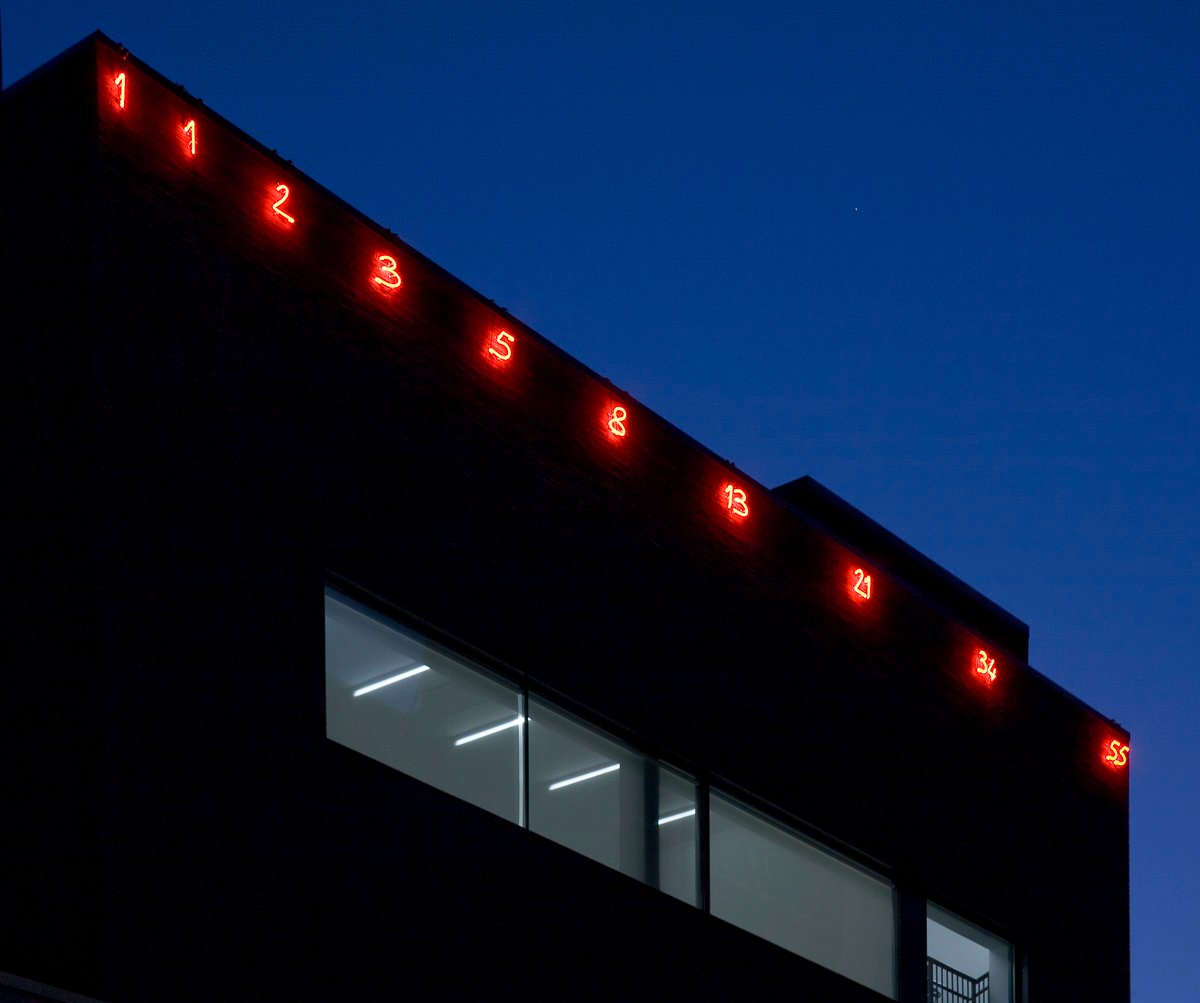
Installation
Work
About
Mario Merz was born in 1925 and died in 2003 in Milan, Italy. He was awarded the Praemium Imperiale, Tokyo; the Oskar Kokoschka Prize, Vienna; and the Arnold Bode Prize, Kassel, Germany. Merz was the subject of numerous solo exhibitions at institutions around the world, including Fundação de Serralves, Porto, Portugal; Welhelm Lehmbruck Museum, Duisberg, Germany; Fundación Antoni Tàpies, Barcelona; and Solomon R. Guggenheim Museum, New York. His work is included in many prominent public collections, including Centre Georges Pompidou, Paris; Hirshhorn Museum and Sculpture Garden, Washington D.C.; The Museum of Modern Art, New York; Stedelijk Museum, Amsterdam; Walker Art Center, Minneapolis; and the Art Institute of Chicago, Illinois, among many others. The Fondazione Merz in Turin, Italy, regularly displays both the works of its namesake and sponsors exhibitions by living artists.
More on Mario Merz
